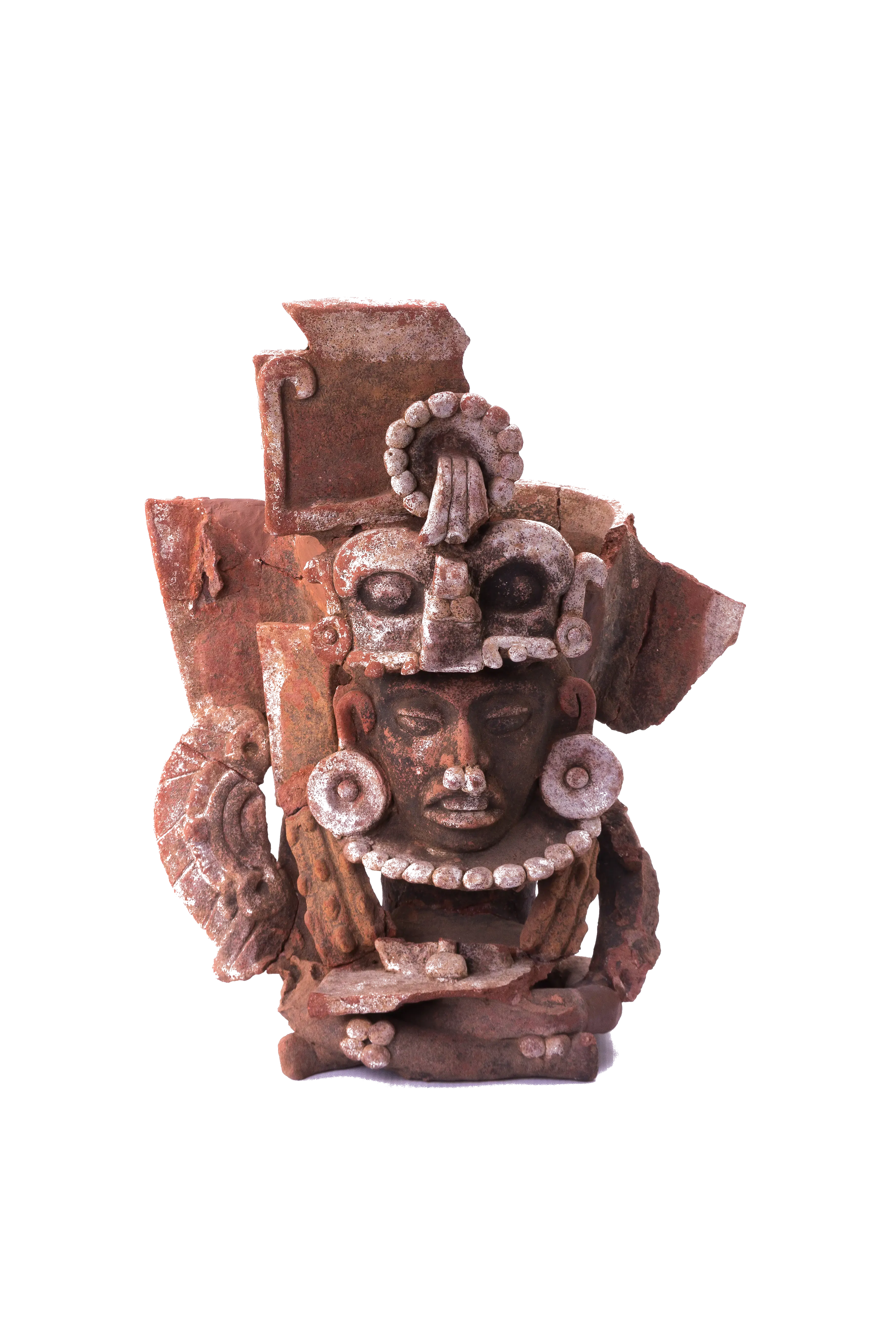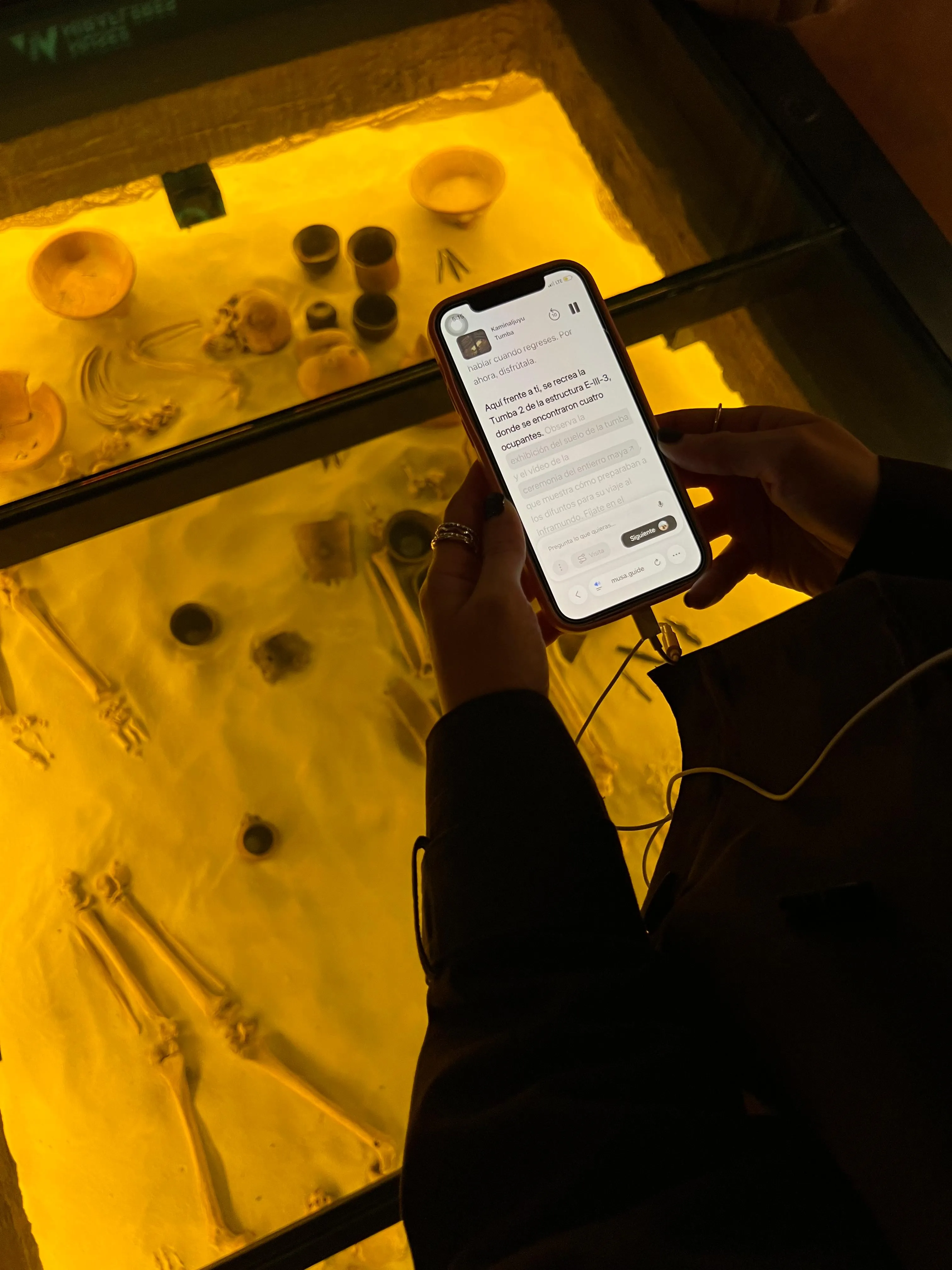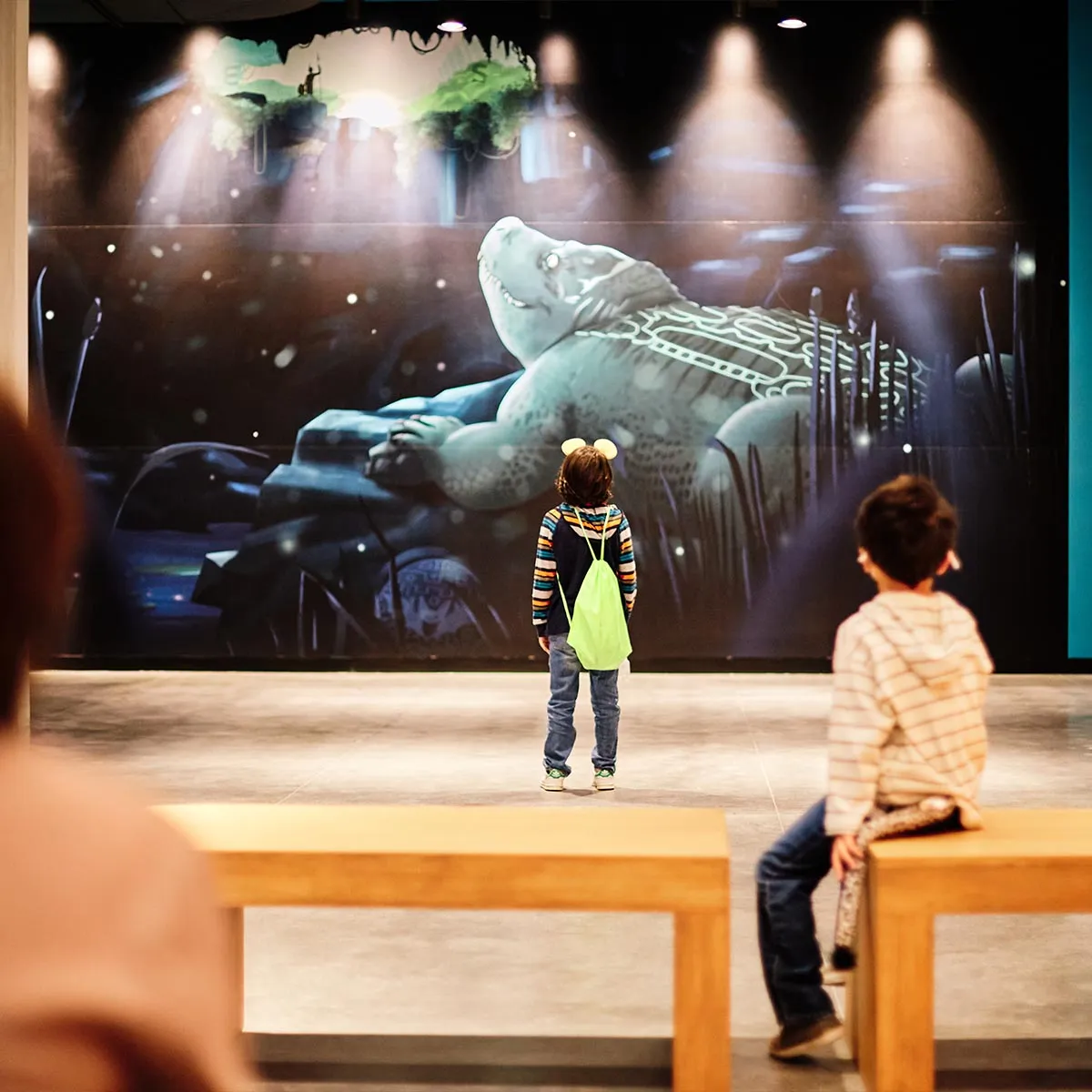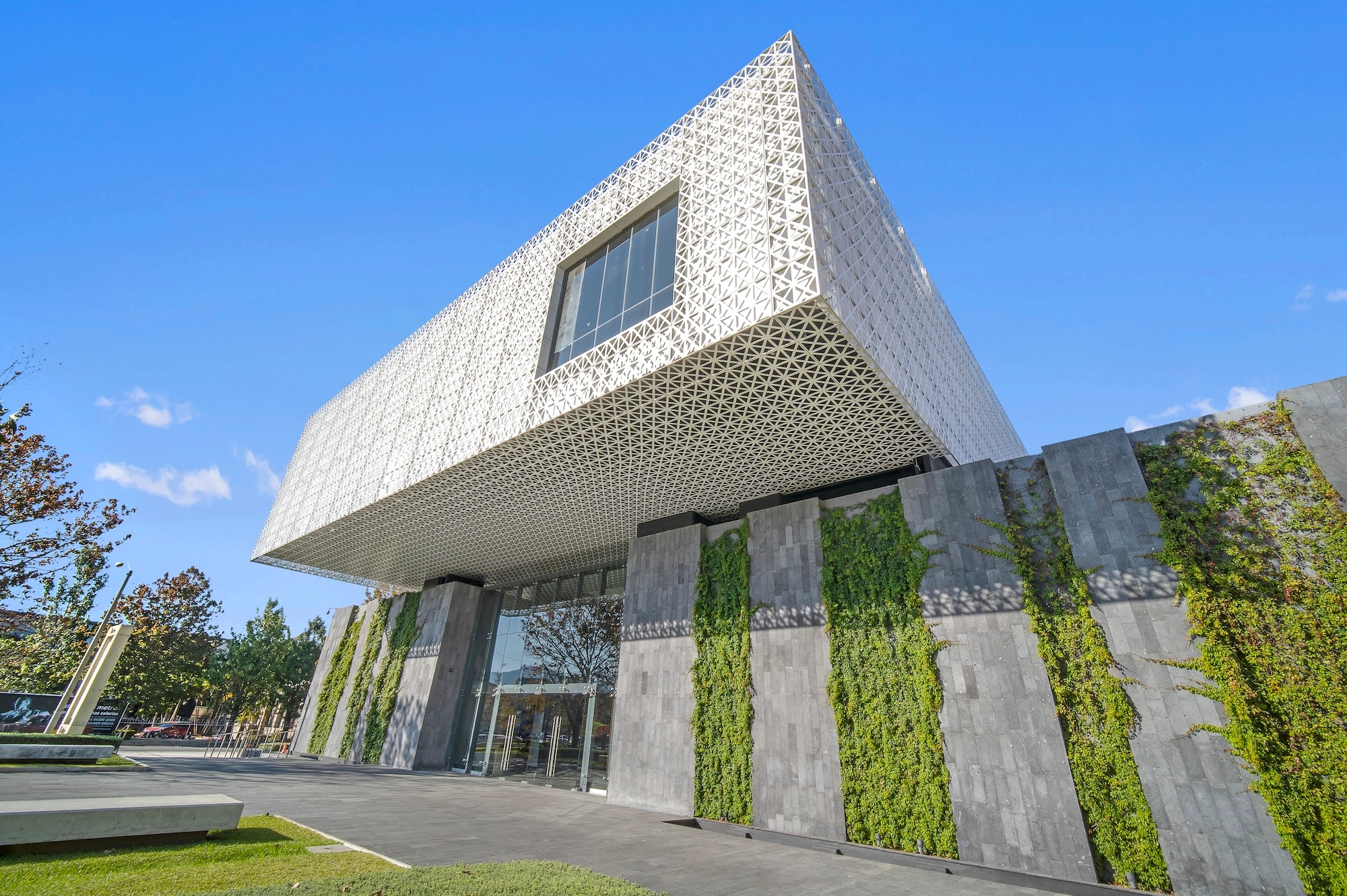Living Guides at Museo Miraflores
Museo Miraflores is the first museum to offer Musa, an AI-powered conversational guide that runs on visitors' phones, as a paid add-on. The launch marks a milestone: the only AI audio guide deployed as a paid and permanent service. Working with the Miraflores team has taught us what it takes to ship something visitors consistently choose over traditional hardware. Here's how we got there.
Searching for Something Better
In early 2021, Museo Miraflores finished renovating its ancient site with a new museum building. The architecture won design awards, the collection drew from decades of archaeological work at Kaminaljuyú, and an audio guide seemed essential for visitors to understand the site. The museum secured funding through a board pitch and donor contributions, then spent almost a year developing a guide with Google, handling the scripting, recording, and capturing 360° imagery.
Problems appeared shortly after launch. Visitor feedback and curator ideas came in regularly, but the guide couldn't evolve with the museum. A minor label change meant new scripts, studio re-recordings, device rebuilds, vendor coordination, and unexpected invoices. The devices that once sat in the lobby moved to the archive room. By 2024, staff pulled them out only when visitors specifically asked.

In early 2025, director Maria Gadsden decided to revisit audio guides. Traditional vendors offered the same stack with modest improvements: still high upfront costs, still no way to test before committing. Bring-your-own-device options had gotten more popular, but the core problem remained: updates took weeks and cost hundreds of dollars.
Larger platforms like Bloomberg Connects offer strong self-serve experiences, but introduce other constraints. Museums report needing vendor approval for content changes, no control over pricing or monetization, limited visitor data, and significant drop-off from the app download requirement.
We met Maria that summer at the Museums and Heritage Show in London. In our interactive demo she saw what made Musa different: The AI could answer follow-up questions, switch languages mid-conversation, and adapt explanations to different knowledge levels. At the same time, no app installs, edits were live in seconds and she was fully in control. Finally a guide that keeps pace with how museums actually work.
Pilot
By July, Maria was ready to move forward. We aligned on scope, ingested source material, and onboarded the Miraflores team, including their archaeologist Hari Castillo. They owned the workflow. They could update the guide as fast as they changed gallery labels.
During the four-week pilot, over 200 visitors used the guide while we shipped more than thirty edits that went live on refresh. We tuned pronunciation with Musa's phoneme engine so names like Kaminaljuyú sounded correct, added more background info, included practical information like emergency exit locations, introduced the Ix'kana narrator persona, and refined navigation prompts to direct attention at the right moments.


Launch
Once the pilot felt right, Maria enabled payments with one click, set the price at $2 per day, and the guide went live.
The early data looks promising. Far more visitors are using Musa than ever touched the old devices: roughly 5x the uptake rate. Average session length runs over 30 minutes, with some visitors staying engaged for nearly two hours. That's a meaningful shift from the 10-15 minute sessions the old guide saw, all at a fraction of the original development cost.
Once payments went live, the museum learned even more about which content resonated. Paid visitors asked more follow-up questions and dug deeper into niche topics. Maria's team is using these insights to refine content and plans to adjust pricing to $4 in early 2026. That kind of iteration on content and pricing isn't possible with traditional audio guides.


In terms of technology, Musa's spatial awareness emerged in practical ways. At certain stops it prompts visitors to peek out nearby windows and see the innocent grassy hill covering mount B-V-III, an ancient Mayan structure hiding in plain sight. Ask for directions to the permanent exhibition and it routes you via the escalators from the second to third floor, explaining the architecturial decisions and meaning of the stunning celestial ceiling visible on the way up.
One of the more memorable lessons came from deep inside the tomb gallery. The Miraflores Underworld sits a level below the main floor, and the deeper visitors walk, the shakier the cellular data gets—despite reception being solid everywhere else. When analytics showed a sharp retention dip right after the burial chamber scene, the team traced it back to guests assuming the guide had stalled and pocketing their phones. They added a short Ix'kana aside just before the descent to flag that connectivity might falter but Musa will pick right back up. That gentle heads-up reset expectations, brought retention after the tomb back in line, and let visitors stay immersed in the AI-guided story.
What We Learned
So far, it seems like there are two distinct usage patterns. Some users really like to ask questions, go off-tour and explore other exhibits, creating their own path through the museum. Others prefer to stick to the curated base tour, exploring the museum similar to a traditional guided tour. We refined the interface to be intuitive to both groups, making Musa a truly versatile tool for any audience.
One unexpected use case: teachers planning school trips. Before bringing students, they use Musa to scout the museum, ask about Mayan history, identify which exhibits work for different age groups, and map routes. While we hadn't designed the guide for this specific use case, by adopting to the visitor's needs Musa still served the museums curatorial voice perfectly. That's the power of AI.

What's Next
For Miraflores, the ability to understand visitors and iterate quickly meant they were able to replace their existing audio guides in a matter of weeks. Musa rejuvenated their audio guide revenue stream, without them having to spend months upfront on funding and development.
If you're running a cultural site and dealing with the same constraints Maria faced in 2024, we'd love to help.
